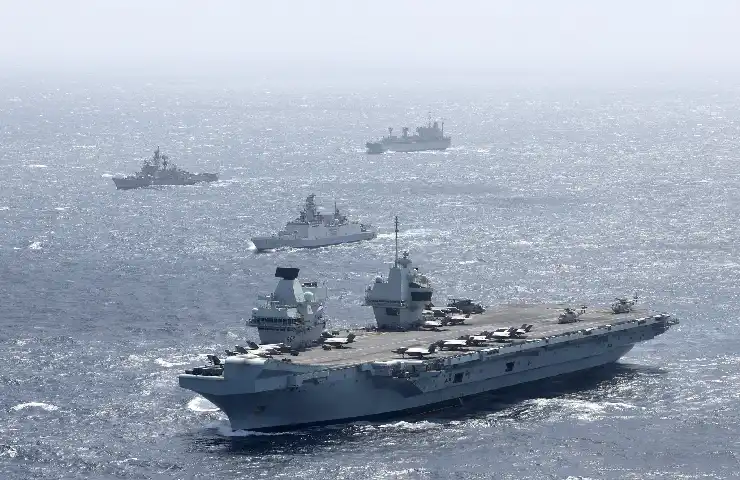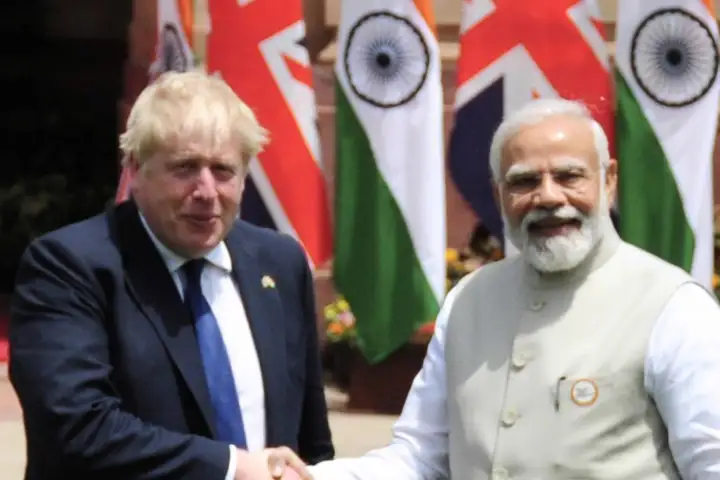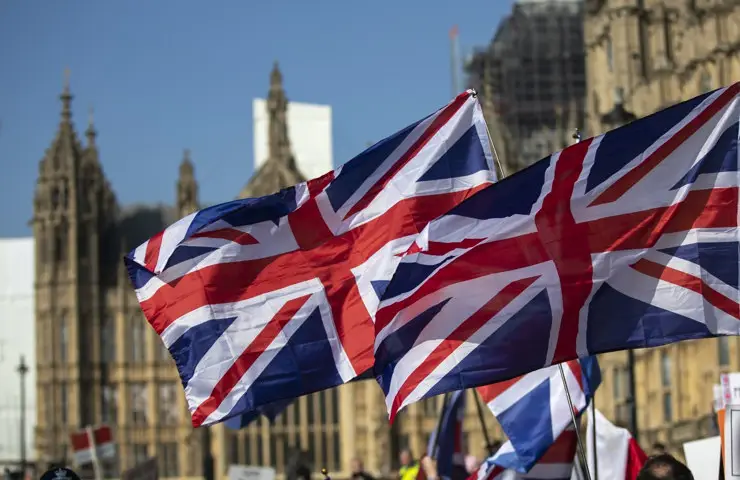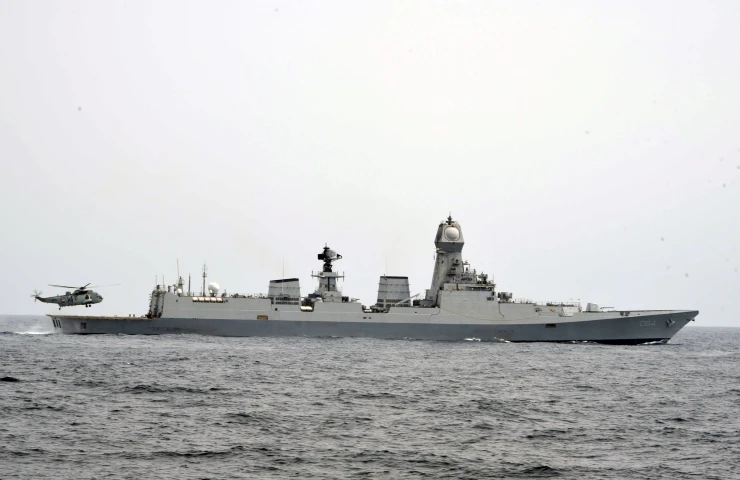With the India-UK naval exercises beginning today, the two nations will embark on increased cooperation in days to come.
The showpiece of the naval exercises will be the UK Carrier Strike Group–HMS Queen Elizabeth–which arrived in Indian waters to hold bilateral exercises with the Indian Navy on India's western coast.
Named Konkan Shakti, the joint naval exercise comes on the heels of a series of similar engagements by both the British navy and the Indian navy in the Indo-Pacific region. British Foreign Secretary Liz Truss is expected to witness the Konkan Shakti exercises during her three-day visit to India beginning Friday.
The Queen Elizabeth aircraft carrier has been on the move since May this year after it was given a ceremonial send-off by Queen Elizabeth at the Portsmouth naval base. British Prime Minister Boris Johnson too had spent the morning on board the carrier before its deployment to the Indo-Pacific.
The sending of the aircraft carrier with its accompanying fleet of two destroyers, two frigates, a submarine and two support ships is being seen as the UK's biggest show of force in decades. It has already traversed through the Mediterranean Sea, the Indian Ocean and onwards into South-East Asian waters till Japan. It also criss-crossed the South China Sea (SCS) where Beijing has been usurping reefs and creating artificial islands, threatening regional peace.
The British vessel is a formidable fighting machine as it also carries American jets.
Commenting on the arrival of the aircraft carrier to India, Alex Ellis, the British High Commissioner to India, said: "India is an essential partner for the UK in the Indo-Pacific region. The Carrier Strike Group’s visit demonstrates the deepening of the UK and India’s defence and security partnership".
The Queen Elizabeth comes to India after participating in a four-day naval exercise with Australia, Japan and the US in the eastern part of the Indian Ocean on October 15-18. It had been joined by American aircraft carrier Carl Vinson at the Maritime Partnership Exercise (MPX) 2021 which sought to enhance regional stability and security.
A large number of countries in Europe and Asia have been holding back-to-back naval exercises as they demonstrate unity and cohesion against Chinese aggression in the region. China has unnerved its neighbours ranging from Japan, Taiwan, Vietnam, the Philippines and India among many others through a show of military force.
The MPX exercise was preceded by Phase two of the Malabar maritime exercise between the four Quad countries, India, Australia, Japan and the US, in the Bay of Bengal from October 12-15.
Under the Phase one Malabar exercises, India had sent four warships to the SCS and South-East Asia on a three-month long deployment. This was considered significant as India was seen entering China's backyard.
Earlier Japan had held a bilateral naval drill with the Sri Lankan navy last month. The Indian Navy too held an exercise with Sri Lanka followed by the Indian Army exercises.
The Indo-Pacific region has seen a flurry of activity with a French submarine, a German battleship, a Dutch vessel and Australian naval vessels sailing into various parts of the region.
Even Indonesia held a fortnight long exercise with the US in August while the Philippines decided not to cancel an agreement with the US over military bases. Feeling the heat from China, the South-East Asian nations re-looked at their relations with the US.
One of the biggest military exercises in the region were the Talisman Sabre exercises that brought in military forces from Japan, the UK, Canada, South Korea and New Zealand. It also had observer nations like India, Indonesia, Germany and France.
Separately, India has been engaged in discussions over the deteriorating security situation in the Indo-Pacific not just with the US, the UK but also with France as the various democracies come together to build a security umbrella in the region.



















